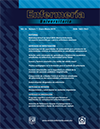Factors related to safety and quality of attention in hospitalized pediatric patients
Main Article Content
Abstract
Introduction: The attention provided to users of health systems can often end up in adverse events (AE) due to intrinsic or extrinsic system factors.
Objective: To analyze factors related to safety and quality of attention in hospitalized pediatric patients using an adverse-events reporting system.
Method: This is a study derived from a multicentric, transversal, and prospective project. Observation unit: All reported adverse events on hospitalized children aged 0 – 18 at the National Institute of Health of the City of Mexico, from June 2014 to July 2015. The SYREC instrument was used for the report. A statistic descriptive analysis and variable comparison through Chi squared and Fisher exact test was performed.
Results: 173 adverse events were registered, 55% of these on males, higher occurrence <1 year (43%), in critical areas 60%. The main events were: unprogrammed intubation (16%), UPP (14%), phlebitis (10%), lesions (9%), burns (8%), medication-related (6%). System factors (39%) were related to distraction, overload, lack of communication, lack of ability, supervision. Extrinsic factors (35%) were related to monitoring, therapeutic handling. Intrinsic factors (26%) were related to the clinic condition of the patient. Conclusions: Safety and quality of attention to hospitalized pediatric patients is often affected by diverse system factors, thus, nursing professionals should be aware of potential impacts to address them correspondingly.
Article Details
Dimensions citation
MÉTRICAS
References
2. Aranaz JM, Aibar C, Vitaller J, Ruiz P. Estudio Nacional sobre los efectos adversos ligados a la Hospitalización. ENEAS 2005. España: Ministerio de Sanidad y Consumo; 2006.
3. Rodríguez-Suárez J, Santacruz-Varela J, Fajardo-Dolci G, Hernández-Torres F. Sistemas de notificación y registro de incidentes en México: aprendizajes. Revista CONAMED. 2012; 17(2): 82-6.
4. Wilson RM, Michel P, Olsen S, Gibberd RW, Vincent C, El-Assady R, et al. Patient safety in developing countries: Restrospective estimation of scale and nature of harm to patients in hospital. BMJ. 2002; 344:1-14. https://doi.org/10.1136/bmj.e832
5. Ramírez-Elizondo N, Paravic-Klijn T, Valenzuela-Suazo S. Riesgo de los turnos nocturnos en la salud integral del profesional de enfermería. Index Enferm 2013; 22(3): 152-5. http://dx.doi.org/10.4321/S1132-12962013000200008
6. Organización Mundial de la Salud. 10 datos sobre seguridad del paciente. Ginebra: OMS; 2018. [Consultado marzo 2 2018]. Disponible en: https://bit.ly/2QIbExG
7. Delgado MC, Fernández M, Anglés I, Coll R, Palencia E, Catalán RM, et al. Información de eventos adversos a pacientes y familiares. Trauma Fund MAPFRE 2013; 24(4): 239-48. [Consultado marzo 1 2016]. Disponible en: https://bit.ly/2MCSNE9
8. Organización Mundial de la Salud. Gasto en salud. Ginebra: OMS; 2018. [Consultado 2 marzo 2018]. Disponible en https://bit.ly/2Wy5ip9
9. Rodríguez Rey YL. Causas de ocurrencia de evento adverso relacionado con la atención de enfermería. [Tesis de grado]. Colombia: Universidad Nacional de Colombia. Facultad de Enfermería. 2014. p. 40
10. Riquelme-Hernández G, Ourcilleón-Antognoni AA. Descripción de eventos adversos en un hospital pediátrico de la ciudad de Santiago, Chile. Enferm. glob. 2013; 12(29): 262-73. [Consultado marzo 2 2018]. Disponible en: https://bit.ly/2HH2ylM
11. Martínez-Reyes SR. Eventos Adversos en el cuidado de Enfermería brindado a niños hospitalizados. REVISALUD Unisucre 2014; 2(1): 66 – 9. [Consultado marzo 02 2016]. Disponible en: https:// bit.ly/2FWzdC3
12. Zárate-Grajales R, Olvera-Arreola S, Hernández-Cantoral A, Hernández-Corral S, Sánchez-Angeles S, Valdez-Labastida R, et al. Factores relacionados con eventos adversos reportados por enfermería en unidades de cuidados intensivos. Proyecto multicéntrico. Enferm univ. 2015; 12(2): 63-72. http://dx.doi.org/10.1016/j.reu.2015.03.003
13. Silva T, Wegner W, Pedro ENR. Segurança da criança hospitalizada na UTI: compreendendo os eventos adversos sob a ótica do acompanhante. Rev. Eletr. Enf 2012; 14(2): 337-44. Disponible en: http://dx.doi.org/10.5216/ree.v14i2.12977
14. Zárate-Grajales RA, Salcedo-Álvarez RA, Olvera-Arreola SS, Hernández-Cantoral S, Barrientos- Sánchez J, Pérez López MT, et al. Eventos adversos en pacientes hospitalizados reportados por enfermería: un estudio multicéntrico en México. Enferm univ. 2017; 14 (4): 277-85. https://doi.org/10.1016/j.reu.2017.08.005
15. Woods D, Thomas E, Holl J, Altman S, Brennan T. Adverse events and preventable adverse events in children. Pediatrics 2005; 115(1): 155-60. https://doi.org/10.1542/peds.2004-0410
16. Miller MR, Zhan C. Pediatric patient safety in hospitals: a national picture in 2000. Pediatrics 2004; 113(6): 1741-6. [Consultado febrero 29 2016]. Disponible en: https://bit.ly/2BbpfbX
17. Moreira IA, Bezerra ALQ, Paranaguá TTB, Silva AEBC, Filho FMA. Conhecimento dos profissionais de saúde sobre eventos adversos em unidade de terapia intensiv. Rev enferm UERJ. 2015; 23(4): 461-7 http://dx.doi.org/10.12957/reuerj.2015.5158
18. Ornelas-Aguirre JM, Arriaga-Dávila JJ, Domínguez-Serrano MI, Guzmán-Bihouet BF, Navarrete- Navarro S. Eventos adversos en pacientes de un hospital pediátrico. Rev. Med. Inst. Mex. Seguro Soc. 2013; 51(6): 680-7. [Consultado febrero 25 2016]. Disponible en: https://bit.ly/2FZPwyd
19. The Joint Commission. Sentinel Event Policy and Procedures (Topic Library Item). Washington DC: Joint Commission 2016 [Consultado marzo 03 2016). Disponible en: https://bit.ly/2RsIkMm
20. Daniels J, Hunc K, Cochrane D, Carr R, Shaw N, Ansermino J, et al. Identification by families of pediatric adverse events and near misses overlooked by health care providers. CMAJ: 2012; 184(1): 29-34. http://dx.doi.org/10.1503/cmaj.110393
21. García-de Lorenzo A. Intervención terapéutica. En: Scores pronósticos y criterios diagnósticos. 2 da ed. España: Ergón S.A.; 200 6.
22. Modelski-Schatkoski A, Wegner W, Algeri S, Rubim-Pedro EN. Safety and protection for hospitalized children: literature review. Rev Latino-am Enfermagem 2009; 17(3): 410-6. http://dx.doi.org/10.1590/S0104-11692009000300020
23. Fernández-Busso N. Los eventos adversos y la calidad de atención: Estrategias para mejorar la seguridad de los pacientes pediátricos. Arch. argent. pediatr. 2004; 102(5): 402-10. [Consultado agosto 23 2018]. Disponible en: https://bit.ly/2BcCkBP

This work is licensed under a Creative Commons Attribution-NonCommercial-NoDerivatives 4.0 International License.
Enfermería Universitaria by Universidad Nacional Autónoma de México it is distributed under the License Creative Commons Attribution - NonCommercial - NoDerivatives 4.0 International
Accepted and published articles become open-access under the terms of the Creative Commons CC BY-NC-ND 4.0 license, which authorizes the reproduction and sharing without commercial purposes, provided the corresponding acknowledgments to their authors. Authors are allowed to manage a self-archive copy of the article’s published version so that they can open-access it in their personal or institutional web pages, and/or any other broad-diffusion space.

